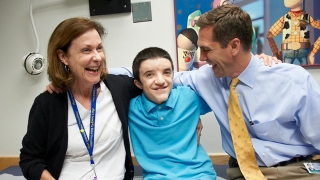Fat Atrophy
What is fat atrophy
Fat atrophy is the loss of fatty tissue in a localized area of the body that can cause pitting, scarring and bumps. As the fatty tissue degrades, it may redistribute and make underlying physical structures more visible, sometimes causing patients to have a sunken appearance in the area of fat atrophy. The skin of the affected area may change color and develop a wrinkled appearance.
Diagnosis
The causes of fat atrophy are varied. Fat atrophy can be associated with Parry-Romberg syndrome and linear scleroderma, or exist as an isolated condition with unknown causes. Loss of fat tissue may also be associated with reactions to medication, corticosteroid injections, systemic illness, or as a result of trauma. Atrophy may also be seen after treatment with chemotherapy or radiation therapy. Loss of fat from the face is unusual in children and young adults, but not rare.
Most patients with fat atrophy have few functional problems, but appearance-related concerns may be substantial.
Treatment
Traditional treatment for fat atrophy includes tissue transfer from another region of the body using microsurgical techniques, as well as placement of synthetic implants. Both procedures have proven success and at times remain necessary.
Newer treatment options for fat atrophy are also available. Modern treatment usually involves replacing lost fat from another part of the body using aspiration and needle injection techniques. In these procedures, fat can be aspirated through special tubes 2-4 mm wide, then cleansed of debris before being reinjected into the face or other fat deficient areas. Fat transferred in this fashion is usually successful. Several sessions of treatment several months apart may be required.
Why choose us
CHOP’s experienced plastic and reconstructive surgeons work closely with parents and referring physicians to addresses all related medical or psychosocial problems that your child may experience related to fat atrophy. Because fat atrophy can be associated with a syndrome or other condition, it is important to receive treatment at a dedicated children’s hospital where coordinated, multidisciplinary care is available across all pediatric specialties. At CHOP, your child will have access to the nation’s top pediatric specialists.
Reviewed by: Scott Bartlett, MD and Jesse Taylor, MD
Date: March 2014
Reviewed by Scott P. Bartlett, MD, Jesse A. Taylor, MD

